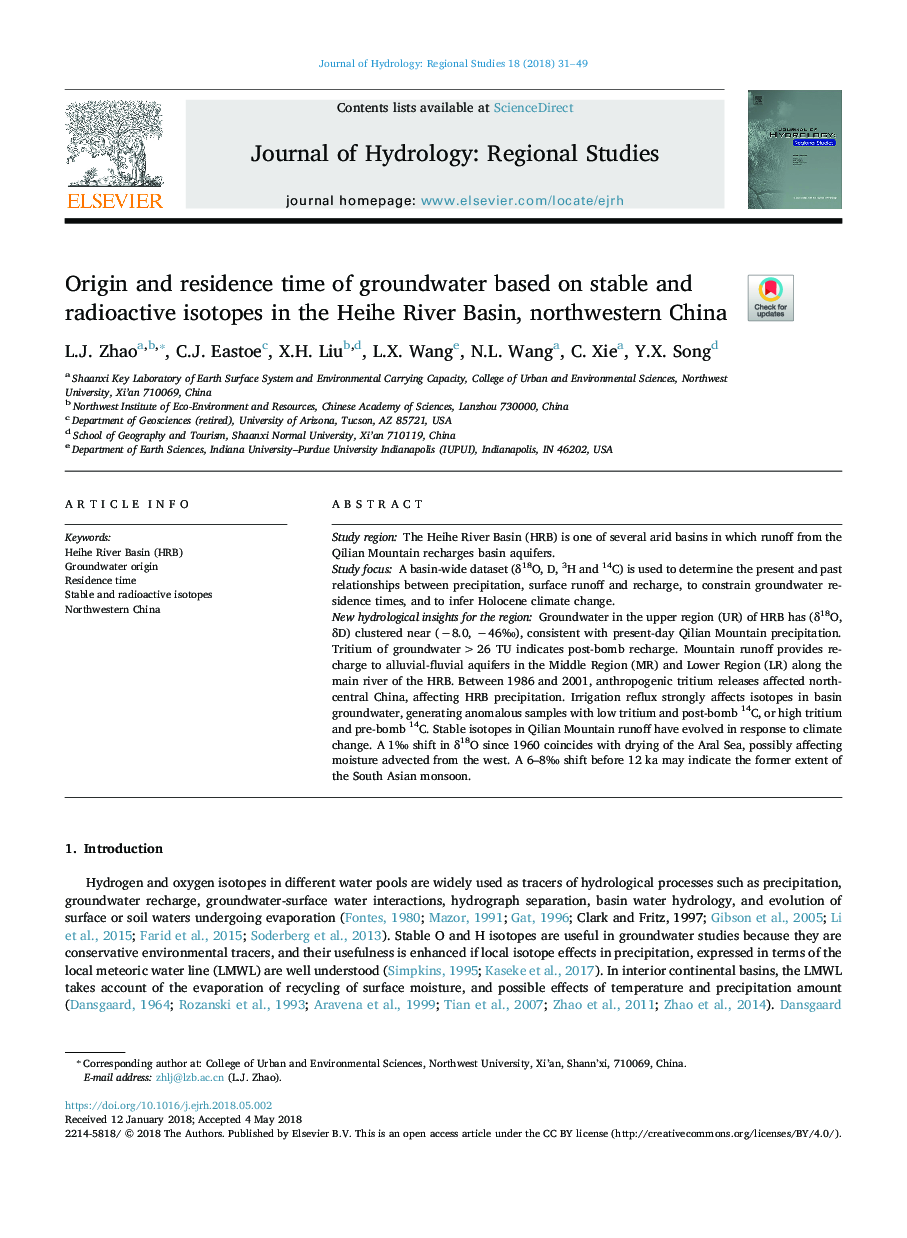| Article ID | Journal | Published Year | Pages | File Type |
|---|---|---|---|---|
| 8862858 | Journal of Hydrology: Regional Studies | 2018 | 19 Pages |
Abstract
Groundwater in the upper region (UR) of HRB has (δ18O, δD) clustered near (â8.0, â46â°), consistent with present-day Qilian Mountain precipitation. Tritium of groundwater >26 TU indicates post-bomb recharge. Mountain runoff provides recharge to alluvial-fluvial aquifers in the Middle Region (MR) and Lower Region (LR) along the main river of the HRB. Between 1986 and 2001, anthropogenic tritium releases affected north-central China, affecting HRB precipitation. Irrigation reflux strongly affects isotopes in basin groundwater, generating anomalous samples with low tritium and post-bomb 14C, or high tritium and pre-bomb 14C. Stable isotopes in Qilian Mountain runoff have evolved in response to climate change. A 1â° shift in δ18O since 1960 coincides with drying of the Aral Sea, possibly affecting moisture advected from the west. A 6-8â° shift before 12 ka may indicate the former extent of the South Asian monsoon.
Keywords
Related Topics
Physical Sciences and Engineering
Earth and Planetary Sciences
Earth-Surface Processes
Authors
L.J. Zhao, C.J. Eastoe, X.H. Liu, L.X. Wang, N.L. Wang, C. Xie, Y.X. Song,
